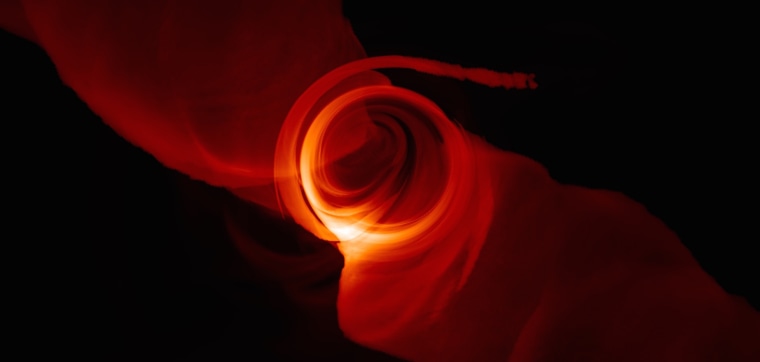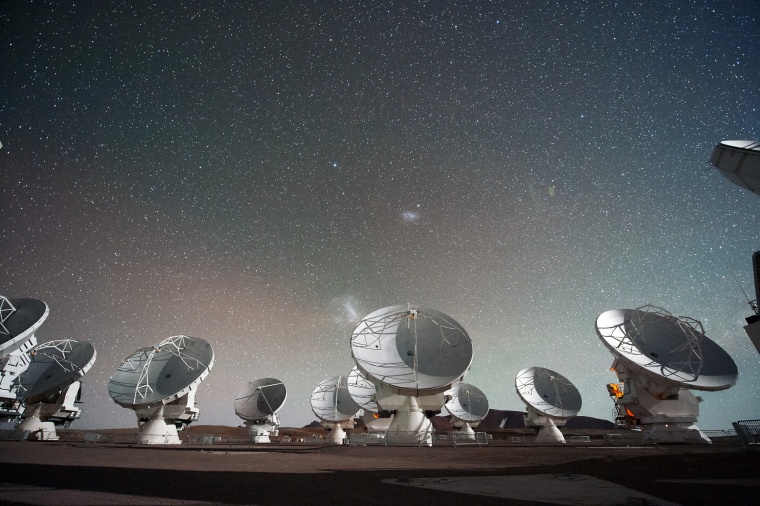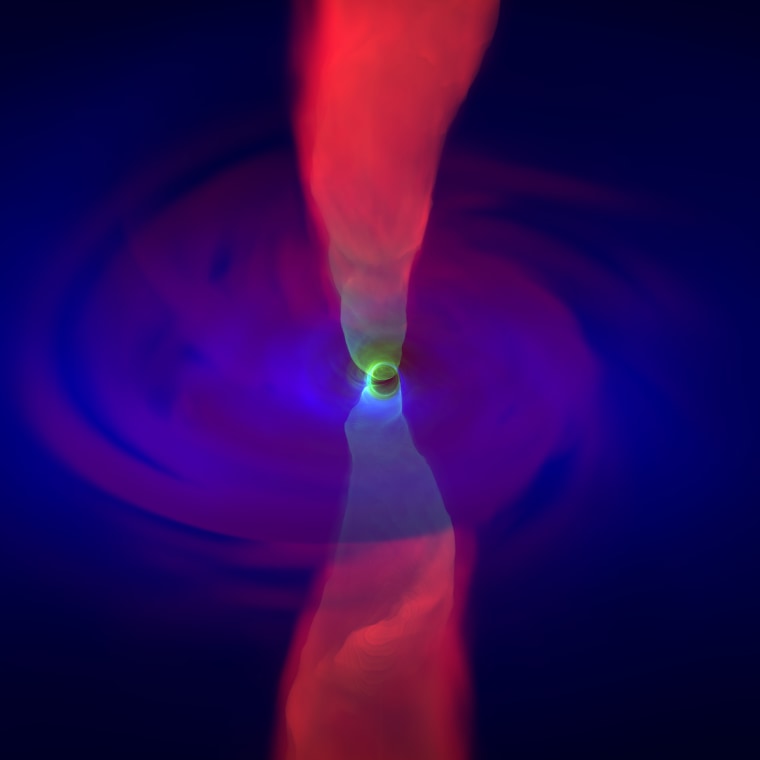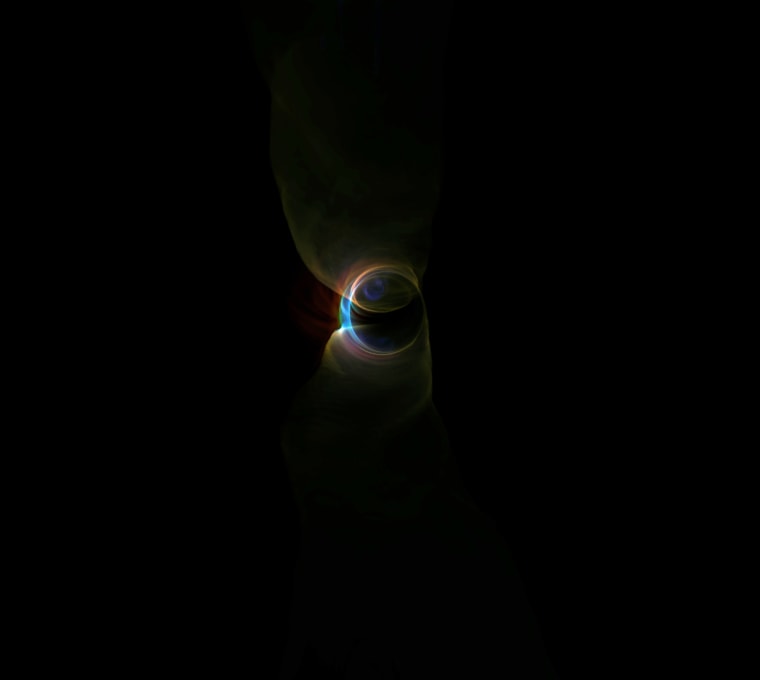It’s Albert Einstein’s weirdest prediction — that the universe is sprinkled with massive objects so dense that not even light can escape them. Although Einstein was skeptical the theory was true, it has held for over a century. Today, astronomers are fairly convinced that nearly every galaxy (including our own) harbors a black hole so massive that it gobbles down any nearby gas and dust, often ripping stars to shreds. And while no one has seen a black hole directly, astronomers might finally be on the brink of doing just that.
For the next 10 days, eight radio observatories at six locations across the globe will be pointed toward the supermassive black hole that hides in the Milky Way’s center. Should the weather cooperate at these observatories — which span the peak of the world’s tallest volcano in Hawaii, the frigid landscape at the South Pole, and the ski-covered slopes of the Sierra Nevada in Spain — astronomers will collect data at a scale never attempted before in physics.
Related: The Hunt For Alien Megastructures Is On
The hope is to image the black hole’s event horizon, the gravitational point of no return, for the first time. Although it’s but a tiny shadow against a glowing backdrop of radiation in the center of the Milky Way galaxy, the image would provide further evidence that black holes exist, put Einstein’s general theory of relativity to one of its most stringent tests, and ultimately help astronomers understand how black holes rule over their respective galaxies.
“We hope to see the un-seeable,” says Shepard Doeleman, director of this Event Horizon Telescope (EHT). “We want to see something that by its very nature tries to do everything it can not to be seen. It’s the ultimate cloaking device.”

Seeing the Unseen
Although astronomers have known since the 1970s that a supermassive black hole, called Sagittarius A*, lurks in the center of the Milky Way, imaging the black hole seemed impossible. That’s because while Sagittarius A* is quite heavy, at a mass of 4 million times that of the sun, it’s also puny, with a radius that’s just 17 times wider. To see something so small from 26,000 light-years away requires a radio dish of global dimensions.
That might sound out of the question, but it isn’t with interferometry — a technique that integrates multiple observatories into one virtual telescope with a size as big as the distance between the locations. Dimitrios Psaltis, EHT’s project director, likes to explain it like this: If one pokes holes in a single mirror in a telescope, that telescope will still create the same image as before — just fainter. So an interferometer is simply a telescope with holes. Or in the case of the EHT, it’s a telescope composed of mostly holes with a few disparate mirrors.
For more than a decade, astronomers have been slowly adding observatories to the Earth-sized telescope, helping it grow to a worldwide collaboration involving 30 institutions in 12 countries. This year, astronomers will add the Atacama Large Millimeter/submillimeter Array (ALMA) in Chile and the South Pole Telescope in Antarctica — two crucial sites that will sharpen the virtual telescope’s resolution so much that it’s 1,000 times stronger than the Hubble Space Telescope. “We could watch a hockey game on the moon because we could resolve the puck,” says Avery Broderick, a theorist at the Perimeter Institute for Theoretical Physics. And that should make all the difference.

The reason that astronomers should be able to image a black hole — which, by definition, is black — is that it’s surrounded by superheated plasma. “In a paradox of their own gravity, black holes can be some of the brightest things in the sky,” Doeleman says. When gas and dust fall toward the ravenous supermassive black hole, it is heated to billions of degrees and can be so bright that it outshines the galaxy itself.
That bright plasma in front of the black hole works like a flashlight, casting a shadow on the plasma behind the black hole to produce a silhouette astronomers can detect at certain wavelengths. But contrary to what you might think, that silhouette won’t look like a ring of light — and this is where the 2014 hit film "Interstellar" got it wrong. Thanks to the Doppler Effect, photons on one side of the ring are going to get a boost in brightness, while photons on the other side will dim. The final result will be a crescent of light, not unlike the moon’s shining sliver that sets just after the sun.
"In a paradox of their own gravity, black holes can be some of the brightest things in the sky."
With that hopeful image in mind, the EHT team will observe Sagittarius A* for two nights during a 10-day window from April 5 to April 14. But their long-term goal is to scour the sky in search of other black holes as well. So during this observing run, they will also swing the Event Horizon Telescope toward M87 — a galaxy just 53.5 million light-years away in the Virgo cluster that harbors another (and even bigger) supermassive black hole.
It will be a nerve-racking time. “Only the paranoid survive,” jokes Doeleman. “You have to be paranoid and you have to be hypervigilant.”
Although the team doesn’t expect any technical glitches, they’re still at the mercy of the weather — and at six different sites. To boot, some observatories are more crucial than others. The South Pole Telescope, for example, is twice as far from another telescope as all of the others, so it doubles the resolution almost instantly. ALMA, too, has a resolution nearly twice as high as the others, so it also doubles the resolution of the EHT almost instantly. Bad weather at one of these sites would prove dire.
“I'm just hoping that this is not the once-in-a-century time where there's a typhoon in the Atacama Desert,” where ALMA resides, Broderick says.
While plenty of the team’s members will be stationed at observatories across the globe, they’ll be in constant communication with a team at the Smithsonian Astrophysical Observatory in Cambridge, Massachusetts. There, Doeleman, Psaltis, and a few colleagues will monitor the health and status of the entire array around the clock.
“The sun never sets on the EHT — or the best thing to say is that the galactic center never sets on the EHT,” Doeleman says.
Einstein in the Spotlight
If the image proves successful, it will provide indisputable evidence that black holes truly exist. Of course, scientists are already fairly certain that the beasts at the centers of galaxies can’t be anything but black holes. That’s in part due to decades of evidence, like the historic discovery last year when astronomers detected the signal of gravitational waves produced by two colliding black holes. But imaging one will be a game-changer.
“It's easy to think of black holes as this highly speculative idea, as a promise of science fiction, but they aren't,” says Roger Blandford, an astronomer at Stanford University who is not a part of the EHT collaboration. “Black holes were once in that realm, but for 30 or 40 years it has been abundantly clear that they are very common in the universe. Beyond all reasonable doubt there is a massive black hole at the center of most normal galaxies, including our own.”
Assuming Blandford is correct and the image garnered by the EHT does resemble a black hole’s silhouette, the next step will be to test Einstein’s general theory of relativity, which has never been scrutinized under the extreme conditions that would prevail near a black hole. The size and shape of the its event horizon are completely determined by general relativity, so should the image deviate from predictions, these observations would provide the first hint that astronomers might not understand gravity at all.
“I would love to be in the collaboration that finds that general relativity is wrong,” Broderick says, admitting his bias. “I think every physicist has dreamed that for the past 60 years. But nevertheless, I recognize that despite it being a fantasy of so many people, it has never come true.” Still, astronomers would like further evidence, and a black hole provides the perfect laboratory.

The Paradox of Black Holes
The observations will likely be the most fruitful in shedding light on the environment just beyond a black hole’s event horizon. By studying that blazing gas as it falls into the event horizon, astronomers will better understand just how black holes grow into the monsters we see today. It’s an open question in astronomy, since we also see these supermassive black holes in the early universe at a time that seems far too early for them to have grown to such ginormous proportions.
Additionally, M87 hosts one of the most spectacular phenomena in the cosmos: a giant jet that shoots away from the black hole, which Doeleman compares to a “blow torch the size of a galaxy.” Although these jets are brilliant, bright, and massive (some extend well beyond the galaxies themselves, into the intergalactic void), astronomers still don’t know how they form. Seeing a jet up close and personal might change that.
Related: Scientists Verified One of Einstein's Most Controversial Theories
“And it turns out that that's not just a matter of astronomical curiosity, because these jets allow black holes to impact their galactic hosts,” Broderick says. They play a massive role in shaping galaxies by injecting energy that stops gas from collecting, which then quenches star formation. That means these jets — and the black holes that power them — are by no means innocent bystanders. They don’t sit silently in the centers of galaxies munching on only nearby dust and gas. Instead, they control the fates of their host galaxies and beyond.
“They're major players in the great cosmic dramas,” Blandford says.
With so much to learn, it’s unfortunate that the image in question won’t immediately appear on screen by the end of April’s observations. Because this is the largest amount of data ever documented in the history of physics, it all has to be recorded on hard drives and then shipped to a central location where supercomputers will combine everything into a single image. The task could take up to six months. Adding further delay, it’s now winter at the South Pole Telescope, meaning all movement to and from the lonely continent won’t resume until Fall.
“There's a little bit of delayed gratification,” Broderick says. “We'll have the data, we'll know that things worked — that no telescopes exploded, there were no great storms, that no receivers went down — but we won’t know what we really got for many months. And then that will be a special moment when we open the box and see what kind of pictures we have.”
